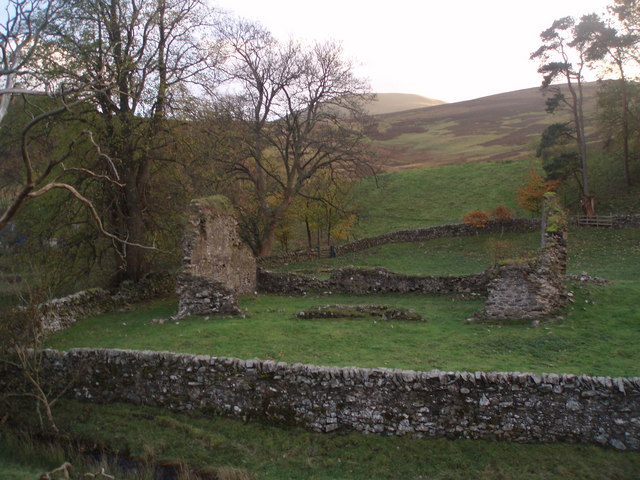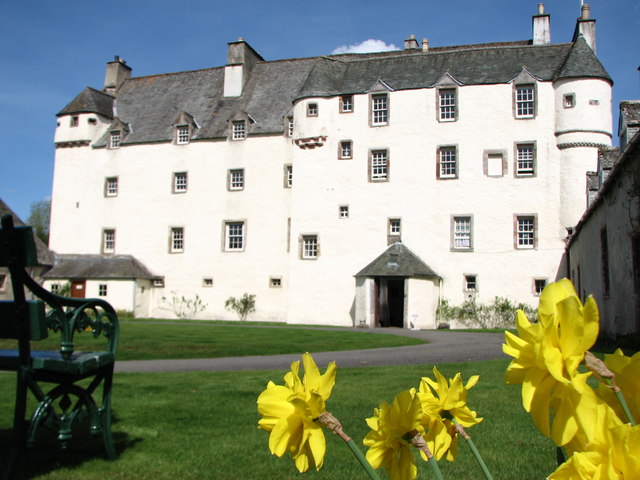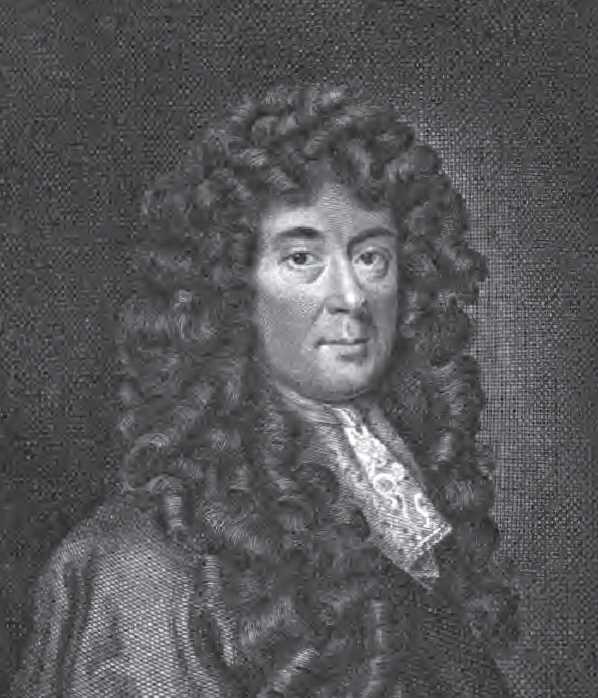|
John Dickson, Lord Hartree
John Dickson, Lord Hartree or Hartrie (1600–1653) was a 17th-century Scottish judge and Senator of the College of Justice and a Member of Parliament. Life He was born in July 1600. He trained in law but made much of his income from his estates. In 1630 he acquired the Kilbucho estate from the Earl of Morton. In 1633 he acquired the Hartree estate 1 mile south of Biggar, South Lanarkshire, Biggar, previously controlled by the Brown family, but under the feudal ownership of the Earl of Traquair. He was Depute Clerk Register to Sir Alexander Gibson, Lord Durie. He was Commissioner for Peeblesshire 1644 to 1651. Not until 1649 did he become an advocate and this seems to have been a contrivance to allow his election as a Senator of the College of Justice to replace his wife's uncle, George Haliburton, Lord Fodderance. In 1649/50 he was MP for Peeblesshire. In November 1650 he presided over the execution trial of an "English spy" Mosse. He died at Hartree Tower in 1653. Fami ... [...More Info...] [...Related Items...] OR: [Wikipedia] [Google] [Baidu] |
Senator Of The College Of Justice
The senators of the College of Justice are judges of the College of Justice, a set of legal institutions involved in the administration of justice in Scotland. There are three types of senator: Lords of Session (judges of the Court of Session); Lords Commissioners of Justiciary (judges of the High Court of Justiciary); and the Chairman of the Scottish Land Court. Whilst the High Court and Court of Session historically maintained separate judiciary, these are now identical, and the term ''Senator'' is almost exclusively used in referring to the judges of these courts. Senators of the college use the title ''Lord'' or ''Lady'' along with a surname or a territorial name. Note, however, that some senators have a peerage title, which would be used instead of the senatorial title. All senators of the college have the honorific, ''The Honourable'', before their titles, while those who are also privy counsellors or peers have the honorific, ''The Right Honourable''. Senators are made pr ... [...More Info...] [...Related Items...] OR: [Wikipedia] [Google] [Baidu] |
Member Of Parliament
A member of parliament (MP) is the representative in parliament of the people who live in their electoral district. In many countries with bicameral parliaments, this term refers only to members of the lower house since upper house members often have a different title. The terms congressman/congresswoman or deputy are equivalent terms used in other jurisdictions. The term parliamentarian is also sometimes used for members of parliament, but this may also be used to refer to unelected government officials with specific roles in a parliament and other expert advisers on parliamentary procedure such as the Senate Parliamentarian in the United States. The term is also used to the characteristic of performing the duties of a member of a legislature, for example: "The two party leaders often disagreed on issues, but both were excellent parliamentarians and cooperated to get many good things done." Members of parliament typically form parliamentary groups, sometimes called caucuse ... [...More Info...] [...Related Items...] OR: [Wikipedia] [Google] [Baidu] |
Kilbucho
Kilbucho ( gd, Cille Bheagha) is a small settlement in the parish of Broughton, Glenholm and Kilbucho in the Scottish Borders area of Scotland in Peeblesshire and near Biggar and Broughton. The name derives from the church which was dedicated to St Bega an Irish abbess. Several monasteries were dedicated to St Bega, many in Cumbria including St Bees but also in Scotland at Kilbagie in Clackmannanshire and Kilbegie in Argyllshire. Near the church is St Bees wellAndrew Baird ''Annals of Tweedale Parish'' John Smith & Son Glasgow 1924 The former parish of Kilbucho, now united in Broughton, Glenholm and Kilbucho, has an area of 6,710 acres.Description of Tweeddale, by Alexander Pennecuik, publ A. Allardice, Leith, 1815; p.43 It forms a valley between Cardon Hill on the south and Hartree Hills on the north, however the land is mainly level with a very slight inclination towards Biggar Water.History of Peeblesshire, by William Chambers, publ. William And Robert Chambers, Ed ... [...More Info...] [...Related Items...] OR: [Wikipedia] [Google] [Baidu] |
Earl Of Morton
The title Earl of Morton was created in the Peerage of Scotland in 1458 for James Douglas of Dalkeith. Along with it, the title Lord Aberdour was granted. This latter title is the courtesy title for the eldest son and heir to the Earl of Morton. The family seat is Dalmahoy Farms, Morton near Kirknewton, West Lothian. History Douglases of Dalkeith The Douglases of Dalkeith are descended from Andrew Douglas of Hermiston (or ''Herdmanston'') (d.b. 1277), younger son of Archibald I, Lord of Douglas (fl. c. 1198–1238). He was succeeded by his son William Douglas of Hermiston, a signatory of the Ragman Roll in 1296. William of Hermiston's son, James Douglas of Lothian succeeded his father and produced two sons, Sir William Douglas and Sir John Douglas. Sir William Douglas, known as the ''Knight of Liddesdale'' or the ''Flower of Chivalry'' obtained the privileges of the barony of Dalkeith, in Midlothian, in 1341, and the barony of Aberdour, in Fife, in 1342. Following his mu ... [...More Info...] [...Related Items...] OR: [Wikipedia] [Google] [Baidu] |
Biggar, South Lanarkshire
Biggar ( gd, Bigear ) is a town and former burgh in South Lanarkshire, Scotland, in the Southern Uplands near the River Clyde on the A702. The closest towns are Lanark and Peebles. Details The town was once served by the Symington, Biggar and Broughton Railway, which ran from the Caledonian Railway (now the West Coast Main Line) at Symington to join the Peebles Railway at Peebles. The station and signal box are still standing but housing has been built on the line running west from the station and the railway running east from the station is a public footpath to Broughton, part of the Biggar Country Path network. The new Biggar & Upper Clydesdale Museum run by the Biggar Museum Trust opened in 2015 and the Biggar Gasworks Museum is the only preserved gas works in Scotland. Additionally, Biggar has Scotland's only permanent puppet theatre, Biggar Puppet Theatre, which is run by the Purves Puppets family. Biggar was the birthplace of Thomas Gladstones, the grandfather of W ... [...More Info...] [...Related Items...] OR: [Wikipedia] [Google] [Baidu] |
Earl Of Traquair
Earl of Traquair (pronounced "Tra-''quare''") was a title in the Peerage of Scotland. It was created in 1633 for John Stewart, 1st Earl of Traquair, John Stewart, Lord Stewart of Traquair. The family seat was Traquair House. Stewart had been created Lord Stewart of Traquair in 1628, and was made Lord Linton and Caberston at the same time as he was given the earldom in 1633. These titles were also in the Peerage of Scotland. The titles became extinct or dormant on the death of the 8th Earl of Traquair, Charles Stewart (b. 1781), 2 August 1861. Earls of Traquair (1633-1861) *John Stewart, 1st Earl of Traquair (~1600–1659) *John Stewart, 2nd Earl of Traquair (1624–1666) *William Stewart, 3rd Earl of Traquair (1657–1673) (succeeded by his brother) *Charles Stewart, 4th Earl of Traquair (1659–1741); m. Lady Mary Maxwell. 17 children (born between 1695 and 1711) all of whom survived to adulthood. *Charles Stewart, 5th Earl of Traquair (1697–1764) (succeeded by his brother); ... [...More Info...] [...Related Items...] OR: [Wikipedia] [Google] [Baidu] |
Alexander Gibson, Lord Durie
Alexander Gibson, Lord Durie I (c.1570–1644) was a Scottish judge and legal author. Life He was son of George Gibson of Goldingstones, a clerk of session, and his wife Mary Airth, of the family of Airth of that ilk in Stirlingshire; William Gibson the lord of session was brother to his great-grandfather George Gibson. Alexander studied Law and graduated M.A. at the University of Edinburgh in August 1588. On 14 December 1594 he was admitted third Clerk of Session. On 10 July 1621 Gibson was appointed a lord of session, and Senator of the College of Justice and took the title of "Lord Durie", his position as clerk of session being then conferred upon his son Alexander, to be held jointly with himself. Sir Robert Douglas, 6th Baronet stated that Gibson was created a baronet of Nova Scotia in 1628, but he does not appear to have used the title. In 1633 Gibson was named a commissioner for reviewing the laws and collecting the local customs of the country. In 1640 he was elect ... [...More Info...] [...Related Items...] OR: [Wikipedia] [Google] [Baidu] |
Peeblesshire
Peeblesshire ( gd, Siorrachd nam Pùballan), the County of Peebles or Tweeddale is a historic county of Scotland. Its county town is Peebles, and it borders Midlothian to the north, Selkirkshire to the east, Dumfriesshire to the south, and Lanarkshire to the west. History The origins of Peeblesshire are obscure, but it became a shire sometime around the twelfth century, covering part of the historic district or province of Tweeddale. The southern part of Tweeddale became the sheriffdom of Selkirkshire, also known as Ettrick Forest, whilst the northern part of Tweeddale was initially divided into two sheriffdoms, based at Peebles and Traquair, before those two were united as the single shire of Peebles, or Peeblesshire, around 1304. From then on the shires gradually became the more important areas for administration; the old provinces were not abolished as such, but their importance diminished. Peeblesshire County Council was created in 1890 under the Local Government (Scotlan ... [...More Info...] [...Related Items...] OR: [Wikipedia] [Google] [Baidu] |
George Haliburton, Lord Fodderance
Sir George Haliburton, Lord Fodderance (c.1580–1649) was a 17th-century Scottish judge and Senator of the College of Justice. Life He was a member of the family of Haliburton of Pitcur (near Coupar Angus) and his father owned a nearby estate at Fotherance (aka Fodderance). He studied Law (probably at St Andrews University). He was elected a Burgess of Dundee in 1625. In November 1627 he was elected a Senator of the College of Justice in place of William Livingston, Lord Kilsyth. He took the title "Lord Fodderance". In 1632 he purchased the Lauton estate in the parish of Cargill, Perthshire and Strabrok house near Linlithgow. He was knighted by King Charles I of England in 1633 at Holyrood Palace and was in the same year placed on the Parliamentary Commission for Surveying of the Laws. In November 1642 he was appointed President of the Court of Session. In 1643 he presided over a dispute between Viscount Dudhope and the City of Dundee. In 1646 he was witness at the bap ... [...More Info...] [...Related Items...] OR: [Wikipedia] [Google] [Baidu] |
George Mackenzie Of Rosehaugh
Sir George Mackenzie of Rosehaugh (1636 – May 8, 1691) was a Scottish lawyer, Lord Advocate, essayist and legal writer. Early life Mackenzie, who was born in Dundee, was the son of Sir Simon Mackenzie of Lochslin (died c. 1666) and Elizabeth Bruce, daughter of the Reverend Peter Bruce, minister of St Leonard's, and Principal of St Leonard's Hall in the University of St Andrews. He was a grandson of Kenneth, Lord Mackenzie of Kintail and a nephew of George Mackenzie, 2nd Earl of Seaforth. He was educated at the King's College, University of Aberdeen (which he entered in 1650), the University of St Andrews, and the University of Bourges in France. Career Mackenzie was elected to the Faculty of Advocates in 1659, and spoke in defence at the trial of Archibald Campbell, Marquis of Argyll in 1661. He acted as justice-depute from 1661 to 1663, a post that involved him in extensive witch trials. Mackenzie was knighted, and was a member of the Scottish Parliament for the C ... [...More Info...] [...Related Items...] OR: [Wikipedia] [Google] [Baidu] |
Alexander Dickson (botanist)
Alexander Dickson FRSE LLD (21 February 1836 – 30 December 1887) was a Scottish morphological botanist and botanical artist. His family had previously had members in the legal and medical professions; one of the earliest of whom any special records exist having been John Dickson of Kilbucho and Hartree, a lawyer, who in 1649 was appointed a Senator of the College of Justice, taking the title of Lord Hartree. Early life He was born at 6 Fettes Row in Edinburgh on 21 February 1836 the son of Jemima Pyper, daughter of the Rev David Pyper, and David Dickson of Hartree, an advocate, and descendant of John Dickson, Lord Hartree. Dickson received his early education at home. In 1855, he entered the University of Edinburgh as a student of medicine; and soon engaged with enthusiasm in those preliminary scientific studies which have so frequently been the occasion of the first awakenings of latent scientific impulses. In him they appear to have served this purpose. He became an ent ... [...More Info...] [...Related Items...] OR: [Wikipedia] [Google] [Baidu] |
David Dickson The Younger
David Dickson (1780–28 July 1842) was a Scottish Presbyterian minister and writer. Life He was born in 1780 at Libberton, Lanarkshire, the parish where his father David Dickson the Elder, Rev David Dickson (1753-1820) was minister. He was educated at the parish school of Bothkennar. In 1792 the family moved to Edinburgh and after several assistant minister positions his father got a post as minister of the New North Church (contained within St Giles Cathedral in Edinburgh and the family relocated, allowing Dickson greater ease to study at the University of Edinburgh. In December 1801 he was licensed to preach in the Church of Scotland by the Presbytery of Edinburgh, and appointed early in 1802 to the Chapel of Ease at Kilmarnock. In December 1802 King George III presented him to the town council of Edinburgh and consequently, in May 1803, he was chosen collegiate minister of St Cuthbert's Church, Edinburgh in place of William Paul (minister), Rev William Paul. Until the death ... [...More Info...] [...Related Items...] OR: [Wikipedia] [Google] [Baidu] |



.jpg)


